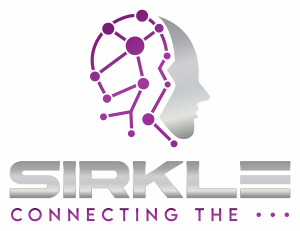Managing the Influence of Bot Traffic on Your Data Metrics
Around 40% of all internet traffic is generated by bots, as reported by Cloudflare’s “Radar Report.” This prevalence poses a significant challenge for those in marketing and data analysis because bot traffic can distort our reports and cause us to rely on inaccurate metrics unknowingly. While ensuring accurate data collection is already complex, the presence of traffic bots further complicates obtaining genuine insights.
In response to this issue, major digital analytics tools have begun to provide bot filtering features. While it is recommended to enable these filters, they often demonstrate limited effectiveness against the various types of bots prevalent on the internet. In some cases, these filters may even mistakenly exclude legitimate and valuable bot traffic, potentially skewing data in favor of inaccurate metrics.
Ultimately, the integrity of our data is compromised and remains at risk.

How does bot traffic impact your business?
Bot traffic poses significant challenges for businesses relying on data-driven decision-making. It adversely affects digital strategies by distorting critical metrics such as conversion rates, bounce rates, total users, and sessions, resulting in unpredictable fluctuations. Moreover, the increased traffic can escalate costs for digital analysis tools, which often charge based on visit volumes. AI tools trained on bot-impacted data may yield inaccurate insights, further compromising decision-making processes.
Additionally, bot traffic can degrade website performance by overloading servers, leading to slow page loads or even site unavailability during peak periods. In severe cases, unchecked bot access can introduce security vulnerabilities, potentially compromising sensitive information.
Recently, a client approached us concerning sudden traffic spikes from Frankfurt during early morning hours, inconsistent with their historical data. Analysis revealed that during these periods, a significant portion—up to 90%—of recorded users exhibited non-human behaviors. This not only undermined data quality but also incurred substantial expenses due to increased website traffic.
However, even minor anomalies can undermine data integrity. To mitigate these risks and maintain reliable data:
Understanding the Enemy:
Effective bot mitigation begins with understanding their diversity. Malicious and non-malicious bots require distinct strategies for detection and handling. Let’s examine some common examples of malicious bots.
Types of malicious bots:
- Scalper bots:
These automated programs swiftly purchase tickets and other limited-availability items, aiming to resell them at inflated prices. - Spam bots:
These bots inundate inboxes or messaging platforms with unsolicited messages, often containing harmful links or content. - Scraper bots:
Automatically extracting data from websites, these bots copy information, including content from competitors, for various purposes.
On the other hand, non-malicious bots perform useful tasks, such as efficiently handling repetitive or data-intensive operations that benefit productivity.
Types of beneficial bots:
- Web crawlers (Spiders):
Advanced bots like Google’s crawlers systematically navigate the internet, indexing web pages to enable organic search traffic. - Backlink checkers:
Tools that analyze and report on inbound links to a website, crucial for search engine optimization (SEO) strategies. - Website monitoring bots:
These bots oversee website performance, detecting issues like security breaches or downtime and alerting site owners promptly.
Rather than exhaustively cataloging every bot type, it’s crucial to recognize their diverse behaviors influencing our strategies for detection and mitigation. Managing bot impact on data integrity requires sophisticated filtering and removal methods, given their evolving nature and potential to distort analytics.
Combatting bot attacks with appropriate tools
Today, there are automated and manual strategies available to address this challenge. Automated solutions often feature bot filtering programs, either integrated into analytics tools or as specialized software designed for AI-driven bot detection. However, as previously noted, their effectiveness can be limited, and they may incur additional costs.
Conversely, non-automated solutions offer more effective results, categorized by the approach they take to filtering:
- Reactive Approach: This method applies custom filters at the report level, offering simplicity and flexibility without requiring development-level changes. It serves as an initial step for early detection, leveraging tools available in analytics platforms such as GA4 segments, Looker Studio filters, and data warehouse queries, although it may be less robust.
- Preventive Approach: Implementing filters before data collection prevents bot impact on reporting and restricts bot access to the website and servers. While more challenging and resource-intensive, this approach effectively mitigates bot-related issues.
Establishing a Data Quality Review Cycle
To ensure our data remains free from bot interference and consistently delivers optimal results, it is essential to adopt a comprehensive strategy that combines preventive and reactive measures. This approach, known as the data quality review cycle, involves continuous monitoring to detect anomalies. It requires collaboration among analysts, developers, and product owners to implement effective solutions that safeguard the integrity and reliability of the data.






























